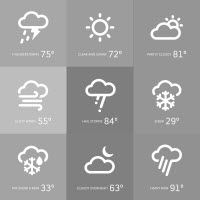SACRAMENTO, Calif. – The Department of Water Resources (DWR) and the U.S. Bureau of Reclamation (Reclamation) are gearing up for the hot and dry summer months as the state experiences a third consecutive year of severe drought.
California will enter the dry summer months with below-average reservoir storage and with the state’s largest reservoir, Shasta Lake, at critically low levels. The Sierra snowpack is essentially gone, and runoff into the state’s streams and reservoirs has largely peaked for the year.
“The overall water supply for California is still critical going into the dry summer months,” said DWR Director Karla Nemeth. “DWR and its federal partners at the U.S. Bureau of Reclamation will continue to take a conservative approach to water management decisions to maintain storage, water quality, and water deliveries for millions of Californians. We need to be prepared for a hotter, drier future brought on by our changing climate.”
DWR and Reclamation are coordinating closely on water project operations and actions to address expected low river flows and temperature challenges this summer.
As a result of the ongoing severe drought conditions, DWR has finalized its decision earlier this year to deliver 5 percent of requested State Water Project (SWP) supplies in 2022. DWR will also provide water for any unmet critical health and safety needs of the 29 water agencies that contract to receive SWP supplies.
Reclamation is taking a similar approach to water supply allocation this year, given the critical conditions at Shasta Lake, the primary source of water for the Central Valley Project (CVP). Reservoir levels in Shasta were the second lowest on record on May 1 this year.
Most agricultural water service contractors will receive a zero percent allocation from the CVP this water year (with Friant Division Class 1 at 15 percent) and municipal water supplies for communities at the minimum levels for health and safety needs only.
“As the cornerstone of the Central Valley Project, we are working to conserve as much storage in Shasta Reservoir as possible, which is currently only at 40 percent capacity,” said Reclamation Regional Director Ernest Conant. “As such, we will be relying heavily on Folsom Reservoir to help with Delta water quality needs this summer. We are also working closely with state and federal partners to help protect endangered winter-run Chinook salmon.”
Among the actions to benefit winter-run Chinook is the installation of chilling units at Shasta Dam that will further cool the water coming into the Livingston Stone National Fish Hatchery.
DWR recently conducted aerial observations of Shasta Lake, Lake Oroville and Folsom Lake to capture still photos and aerial video of the lake levels at their seasonal peak. These photos and videos are available for use by media outlets.
DWR will continue to preserve as much storage as possible in Lake Oroville, the SWP’s largest reservoir. Water releases from Lake Oroville will be prioritized to maintain Delta water quality, protect endangered species, and meet senior water right needs.
DWR and Reclamation have been operating the State Water Project and Central Valley Project under a Temporary Urgency Change Order since April that allowed for the flexibility to release less water into the Delta through June 30 and conserve limited stored water in Shasta, Oroville, and Folsom reservoirs. DWR and Reclamation currently project that both systems have available water supply to maintain Delta water quality through the summer.
The Emergency Drought Salinity Barrier along the West False River in the Delta will remain in place to help conserve storage and reduce the amount of saltwater intrusion into the Delta through the summer and fall. The barrier is expected to remain in place until November 30, however its continued need into 2023 will be reassessed in the fall.
Uncertainty still remains as summer approaches. Hotter temperatures, longer heatwaves, and wildfires could impact water management decisions. DWR and Reclamation will continue to monitor conditions and adjust as needed to navigate the severe drought conditions and plan for another dry fall and winter to come.
With that in mind, California is continuing to respond with a series of drought actions:
- Governor Newsom has called on all Californians to voluntarily reduce their water use by 15 percent. He has also urged local water agencies to take more aggressive action to reduce water use through their locally developed Water Shortage Contingency Plans. Local agency decisions on water conservation are key to successful management of water resources.
- The State Water Resources Control Board has voted to require water agencies to move to Level 2 of their contingency plans, meant to address up to a 20 percent shortage of water supplies. The Water Board also voted to ban the watering of non-functional turf or decorative grass found around commercial buildings, industrial parks, and along roadways. DWR estimates that the ban will save hundreds of thousands of acre-feet a year, enough to supply water to more than half a million households for a year.
- DWR is providing direct community assistance for drought relief projects and to communities who need it most to address water supply challenges and help build local resilience. To date, DWR has awarded more than $406 million in drought relief funding to communities throughout the state. Additionally, the state recently announced $150 million in funding for groundwater sustainability projects in communities that rely on groundwater for their water supply.
